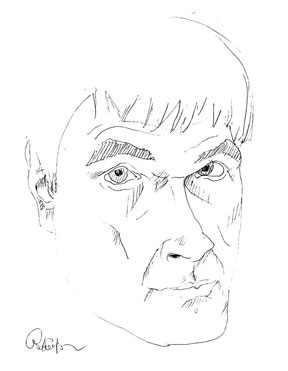 SHORT BIO
SHORT BIOPhil’s music has been performed at New York’s Town Hall and the Museum of Modern Art Summergarden series, at the Kennedy Center, national conferences of the College Music Society and the Society of Composers, the Ernest Bloch Music Festival Composers Symposium, and many other locations in Maine and elsewhere. He has received commissions from the Portland Symphony Orchestra, Bossov Ballet Theatre, Sebago-Long Lake Region Chamber Music Festival, American Composers Alliance, and National Symphony Orchestra Residency Program, as well as fellowships from the National Endowment for the Arts and the Maine Arts Commission, and a residency at the MacDowell Colony. In addition to his works for conventional Western media, Carlsen has written for Javanese gamelan, automobile orchestra, and his own invented instruments. Phil plays cello and viola da gamba with the early music group St. Mary Schola, and, at the other end of the historical spectrum, directed the 2016 Back Cove Contemporary Music Festival at the Portland Conservatory of Music. He lives in South Portland, Maine, with his wife, the poet Jeri Theriault.
In addition to the Bartok and Harris pieces, there have been many other musical touchstones along the way for me: Ives’s Symphony No. 4, Cage’s Music for Marcel Duchamp, Berio’s Sinfonia, Stravinsky’s Symphonies of Wind Instruments, Partch’s And on the Seventh Day Petals Fell on Petaluma, Jehan Alain’s Litanies, Berg’s Wozzeck, Reich’s Music for 18 Musicians, Penderecki’s De natura sonoris, Messiaen’s Chronochromie, Carter’s and Lutoslawski’s Concerto for Orchestra, Takemitsu’s Coral Island…. Influences have come from other directions, too: Coltrane, Miles, Mingus, Brubeck, John McLaughlin, Zappa, Sly and the Family Stone, Japanese gagaku, Javanese gamelan, etc.
My study of non-Western music as an undergraduate at the University of Washington helped me think in new ways about the passage of time, sonority, and texture. Heterophony, for example, a basic feature of Southeast Asian ensemble music, has always figured prominently in my work. I enthusiastically took on the challenges of combining Western instruments with Javanese gamelan in my 2003 pieces Lotos Eaters and Dust as We are, and I expect to keep returning to that fertile territory where equal temperament meets slendro and pelog. I wrote my dissertation on the player piano music of Conlon Nancarrow, absorbing into my own style some of his ideas about rhythm and counterpoint. Inspired by Harry Partch, I designed and built several instruments of my own, using them for a 1974 piece I composed for Dance Theatre Seattle. (What an overwhelming experience it was, this past May, to see and touch and play several of Partch’s instruments for the first time, in Room 21 at the University of Washington School of Music, the same room where I took a brass techniques class over forty years ago!)
As a composer, I owe an incalculable debt to my mentors Robert Suderburg and Jacob Druckman. I am also grateful for all I learned from Stuart Dempster, William Bergsma, Charles Dodge, Mario Davidovsky, and Wiley Hitchcock.